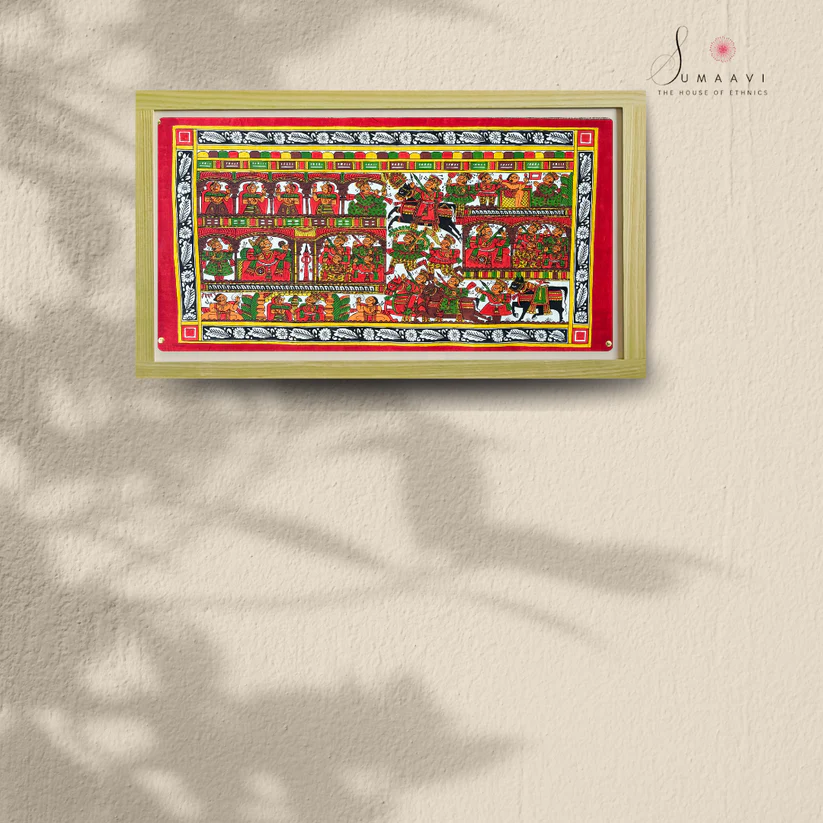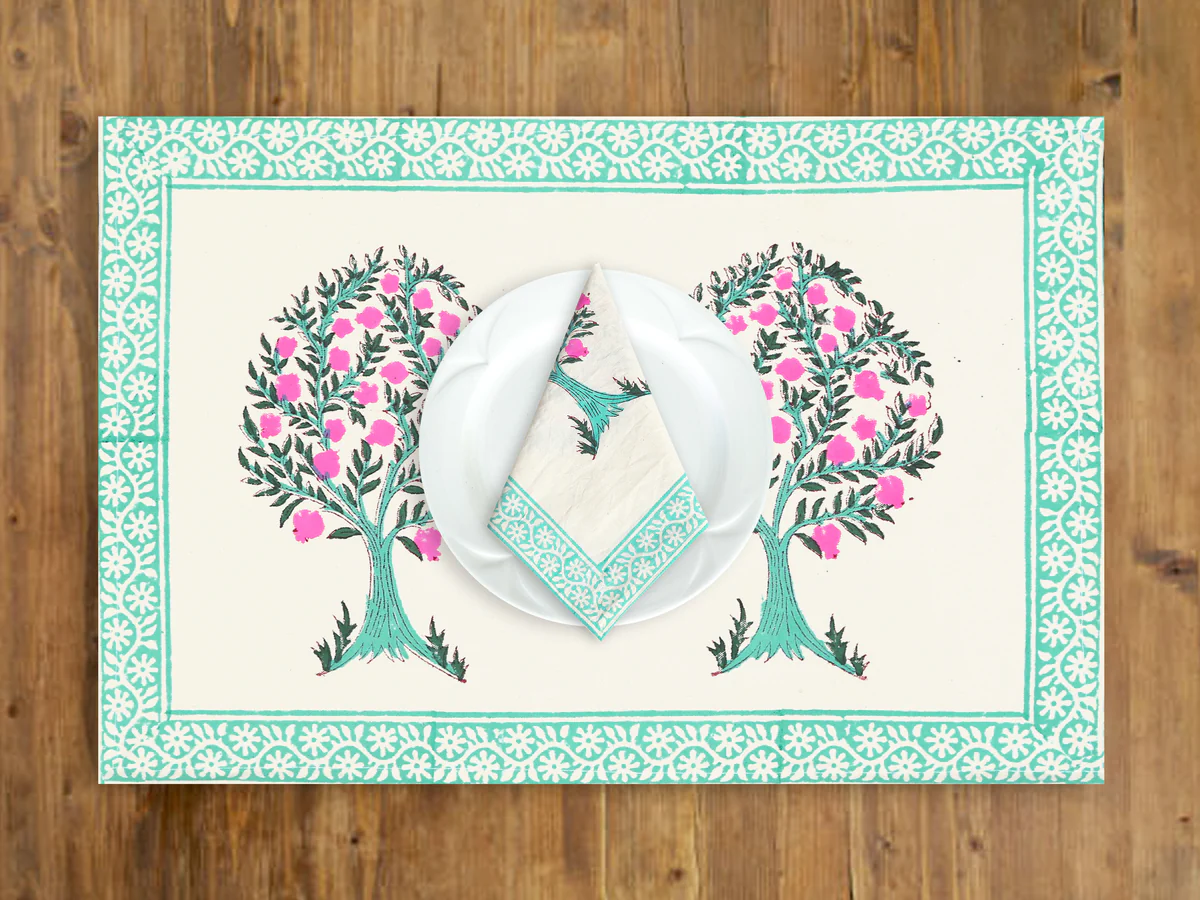Symbols and Themes in Phad Paintings: What Do They Represent?

Phad paintings are one of the most intricate and expressive forms of Indian folk art, originating from Rajasthan. These paintings are not just aesthetic creations but visual storytelling tools that narrate the legends of deities, folk heroes, and mythological events. Every symbol, color, and pattern in a Phad painting has a deeper meaning, making it a rich cultural artifact with profound significance.
In this article, we explore the symbols and themes used in Phad paintings and their meanings, giving you a closer look at how this centuries-old art form continues to captivate audiences.
How Do Symbols Enhance the Meaning of Phad Paintings?
Symbols in Phad paintings are more than just decorative elements; they serve as visual cues that help viewers understand the story being depicted. Each character, gesture, and object holds symbolic significance, ensuring that even those unfamiliar with the story can grasp its essence.
1. Colors as Symbols in Phad Paintings
Colors play a vital role in conveying mood, personality, and divine attributes. Traditional Phad artists use natural pigments, and each color is chosen carefully:
-
Red: Represents valor, energy, and sacrifice. It is commonly used for warriors and deities in action.
-
Yellow: A color of divinity and knowledge, often used in spiritual backgrounds.
-
Green: Signifies fertility and prosperity, frequently seen in depictions of nature.
-
Blue: A symbol of strength and wisdom, associated with powerful figures like Lord Krishna.
-
Black: Used for outlining and enhancing contrast, making the details stand out.
What Are the Common Themes in Phad Paintings?
Phad paintings have traditionally focused on mythology, folklore, and spiritual narratives. Over time, new themes have emerged, blending traditional and contemporary influences.
1. Depiction of Folk Deities: Pabuji and Devnarayan
The most recurring theme in Phad paintings is the tales of Rajasthan’s folk deities, particularly Pabuji and Devnarayan.
-
Pabuji’s Phad: Tells the story of Pabuji, a folk deity and Rajput hero known for his courage and devotion.
-
Devnarayan’s Phad: Depicts the life of Devnarayan, a legendary figure believed to be an incarnation of Vishnu.
Both these paintings serve as mobile temples, carried by Bhopas (priest-singers) who narrate the story through songs and performances.
2. Scenes from Epics: Ramayana and Mahabharata
Some modern Phad artists have expanded their themes to include episodes from Hindu epics like:
-
Ramayana: Showcasing Rama’s exile, battles, and return to Ayodhya.
-
Mahabharata: Highlighting the Kurukshetra war and Krishna’s teachings in the Bhagavad Gita.
These paintings help preserve ancient stories while adapting to changing cultural preferences.
3. Royal Court and Battle Scenes
Many Phad paintings illustrate the glory of Rajput kings and warriors, emphasizing their bravery, military strategies, and court rituals.
-
Battle scenes are depicted with dynamic action and exaggerated expressions.
-
Palace life is represented through royal processions, feasts, and court gatherings.
These themes reflect the historical significance of Rajasthan’s ruling dynasties and their contribution to Indian heritage.
What Are the Key Symbols in Phad Paintings and Their Meanings?
Phad paintings use iconography to make storytelling more impactful. Let’s explore some of the most common symbols found in these paintings:
1. The Sun and Moon
-
Sun: Represents divine energy and protection. It is often placed at the top of the painting to signify the presence of a higher power.
-
Moon: Symbolizes tranquility, time cycles, and wisdom. It is commonly seen in night scenes or spiritual narratives.
2. Animals and Their Symbolism
-
Horses: Represent speed, power, and nobility. Pabuji is often depicted riding a horse, showcasing his heroic status.
-
Elephants: A symbol of royalty, wisdom, and prosperity. Used to depict kings and grand processions.
-
Peacocks: Represent beauty and devotion, frequently associated with Lord Krishna.
3. Temples and Religious Symbols
-
Temples: Indicate places of worship and divine intervention in the story.
-
Conch Shells: Used to symbolize purity, divine sound, and victory.
-
Tridents (Trishul): Represent Lord Shiva and divine destruction.
These symbolic elements enhance the meaning of the painting, allowing viewers to interpret the story visually without needing textual explanations.
How Do Phad Paintings Compare to Other Traditional Art Forms?
Phad paintings share similarities with Pichwai paintings, another form of Rajasthani folk art, but they have distinct differences:
| Feature | Phad Painting | Pichwai Painting | Madhubani Painting |
|---|---|---|---|
| Origin | Rajasthan | Rajasthan | Bihar |
| Canvas | Long scrolls | Cloth & paper | Handmade paper |
| Themes | Folk deities & epics | Lord Krishna themes | Nature & mythology |
| Style | Narrative storytelling | Detailed floral designs | Geometric patterns |
For those interested in Pichwai Paintings Online, you can explore authentic collections here. Similarly, if you are looking for the Best Phad Paintings Online, visit here.
How Have Phad Paintings Evolved in Modern Times?
Although Phad paintings remain deeply traditional, they have evolved to reflect contemporary themes. Some key transformations include:
-
Miniature Phad Art: Originally, Phad paintings were large scrolls, but now smaller versions are created for modern art lovers.
-
New Storylines: Artists are now illustrating historical events, social issues, and even personal commissions.
-
Digital Influence: Some artists are using digital techniques to preserve and reproduce traditional Phad paintings.
Why Is It Important to Preserve Phad Paintings?
Phad paintings are more than just decorative pieces; they are cultural archives that preserve Rajasthan’s history, mythology, and artistry.
Here’s why preserving them is crucial:
-
Safeguarding Traditional Knowledge: Phad painting is a heritage art, and ensuring its continuity helps protect India’s artistic legacy.
-
Supporting Local Artists: Buying authentic Phad paintings provides economic support to artisans who have dedicated their lives to this craft.
-
Promoting Cultural Awareness: These paintings offer a window into India’s past, making them essential for historical preservation.
Conclusion
Phad paintings are an extraordinary fusion of storytelling, symbolism, and artistic brilliance. Every color, figure, and element in a Phad painting holds deep significance, ensuring that these artworks continue to captivate and educate audiences.
By appreciating and understanding the symbols and themes in Phad paintings, we contribute to their preservation and appreciation, keeping Rajasthan’s artistic heritage alive for future generations.







